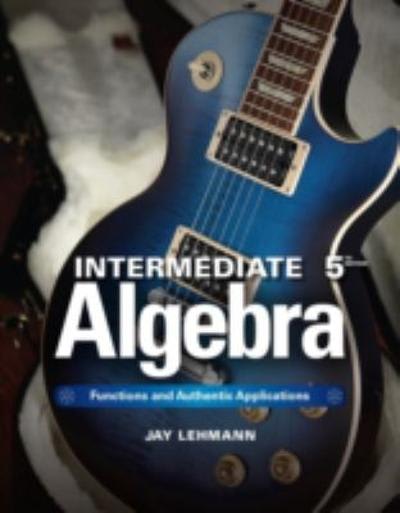





1)
Masculinethemed words (such as competitive, independent, analyze, strong) are commonly used in job recruitment materials, especially for job advertisements in maledominated areas (Gaucher, Friesen, 8! Kay, 2010). The same study found that these words also make the jobs less appealing to women. In a similar study, female participants were asked to read a series of job advertisements and then rate how interesting or appealing the job appeared to he. Half of the advertisements were constructed to include several masculinethemed words and the others were worded neutrally. The average rating for each type of advertisement was obtained for each participant. For n = 25 participants, the mean difference between the two types of advertisements is MD = 1.32 points (neutral ads rated higher) with 85 = 150 for the difference scores. Is this result sufcient to conclude that there is a significant difference in the ratings for two types of advertisements? Use a twotailed test with o = .05. t critical 2 i V t = V \fCompute r2 to measure the size of the treatment effect. (Round your answer to three decimal places.) Write a sentence describing the outcome of the hypothesis test and the measure of effect size as it would appear in a research report. Female participants V job recruitment materials with masculinethemed words signicantly differently than job recruitment materials with neutral words, V V V . r r The stimulant Ritalin has been shown to increase attention span and improve academic performance in children with ADHD (Evans et al., 2001). To demonstrate the effectiveness of the drug, a researcher selects a sample of n = 20 children diagnosed with the disorder and measures each child's attention span before and after taking the drug. The data show an average increase of attention span of MD = 4.8 minutes with a variance of s2 = 125 for the sample of difference scores. Is this result sufficient to conclude that Ritalin significantly improves attention span? Use a onetailed test with a = .05. t critical 2 4 t = { t Distribution Degrees of Freedom = 13 ooo -3.0 -2.0 -1.0 0.0 1.0 2.0 3.0 t O Reject the null hypothesis; conclude that attention span is significantly shorter with the medication. O Fail to reject the null hypothesis; conclude that attention span is not significantly longer with the medication. O Reject the null hypothesis; conclude that attention span is significantly longer with the medication. O Fail to reject the null hypothesis; conclude that attention span is significantly longer with the medication.Compute the 80% condence interval for the mean change in attention span for the population. 0 3.47 to 6.12 O 2.65 to 6.95 O 1.43 to 8.12 O 0.43 to 10.03 Complete the following sentence demonstrating how the results of the hypothesis test and the condence interval would appear in a scientic journal article. Ritalin V participants'attention span, V , V f V . There is some evidence suggesting that you are likely to improve your test score if you rethink and change answers on a multiplechoice exam (Johnston, 1975]. To examine this phenomenon, a teacher gave the same nal exam to two sections of a psychology course. The students in one section were told to turn in their exams immediately after finishing, without changing anyr of their answers. In the other section, students were encouraged to reconsider each question and to change answers whenever they felt it was appropriate. Before the final exam, the teacher had matched 9 students in the rst section with 9 students in the second section based on their midterm grades. For example, a student in the nochange section with an 89 on the midterm exam was matched with a student in the change section who also had an 89 on the midterm. The difference between the two final exam grades for each matched pair was computed, and the data showed that the students who were allowed to change answers scored higher by an average of MD = 7 points with 88 = 288. Do the data indicate a signicant difference between the two conditions? Use a twotailed test with a = .05. 5M1) = V t = v t critical 2 i V O Reject the null hypothesis; conclude that changing answers does not have a signicant effect on exam performance. 0 Reject the null hypothesis; conclude that changing answers has a signicant effect on exam performance. 0 Fail to reject the null hypothesis; conclude that changing answers has a signicant effect on exam performance. 0 Fail to reject the null hypothesis; conclude that changing answers does not have a signicant effect on exam performance. t Distribution Degrees of Freedom = 8 ooo -3.0 -2.0 -1.0 0.0 1.0 2.0 3.0 Construct a 95% confidence interval to estimate the size of the population mean difference. O 4.388 to 13.612 1.388 to 10.612 O 2.388 to 11.612 O 6.388 to 15.612Complete the following sentence demonstrating how the results of the hypothesis test and the confidence interval would appear in a research report. Changing answers in significantly exam scores





















